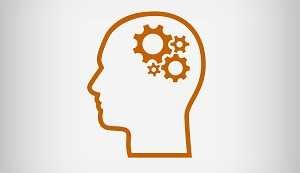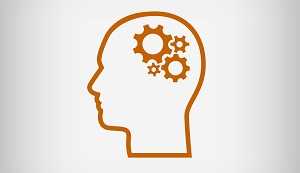UDL theory can help embed a personalized approach to the instructional design process
 Personalized learning. The term is everywhere these days. And it’s tantalizing. It promises to fulfill longstanding ambitions to make education more effective for all. There’s nothing new about personalized learning, either as an aspiration or a practice. It’s an approach that’s as least as old as the one-room school house.
Personalized learning. The term is everywhere these days. And it’s tantalizing. It promises to fulfill longstanding ambitions to make education more effective for all. There’s nothing new about personalized learning, either as an aspiration or a practice. It’s an approach that’s as least as old as the one-room school house.
Today, computer-based medical technologies, such functional magnetic resonance imaging (fMRI), have showed us that learning is far more personal than we ever knew. We now know that even subtle changes in educational contexts, methods, and materials can change how the learning brain performs, for better or worse.
At the same time, new technologies have revolutionized how we learn. Portable, personal computers with friendly interfaces, vast computing power, and networked capabilities make it possible to tailor learning to personal interests and needs.
Yet having and using technology in teaching and learning is not enough. Rather, making the most of technology requires a methodical and principled approach, one that turns the aspirations of personalized learning into an effective practice of personalized learning. Universal design for learning makes that practice possible. The challenge for educators is to realize this potential in the classroom on Monday morning.
Next page: Taking a “whole brain approach”
Educators and researchers, including my colleagues at the Center for Applied Special Technology (CAST), have rushed to meet the challenge of helping teachers create personalized learning environments by, well, personalizing the learning experience.
CAST’s contribution to the field is the development of the UDL framework, which identifies three brain networks related to learning:
- Affective networks that evaluate and set priorities (the “why” of learning);
- Recognition networks that receive and analyze information (the “what” of learning);
- Strategic networks that plan and execute actions (the “how” of learning).
Taking these brain networks into account, UDL recommends the design of flexible, option-rich curriculum that offers learners:
- Multiple means of engagement (affective),
- Multiple representations of content (recognition), and
- Multiple means of action and expression (strategic).
These three principles for personalized learning—a “whole brain” approach, if you will—recognize that not all individuals learn in the same standardized ways.
UDL designing for personalized learning
As any teacher or instructional designer knows, there are four components in designing lessons—goals, assessments, methods, and materials. When designing from a UDL perspective, all of these components are equally important. Any that are poorly designed can thwart personalized learning. Just as the three UDL principles work together to address the brain’s learning networks, so too do the curriculum components work together as a system.
Let’s look at them more closely and see how Universal Design for Learning can help with embedding personalization in the instructional design process.
Next page: Goals, methods, materials, and assessment
Goals
Clear goals tell us what we want to accomplish—in a given lesson, in a unit, in the next year. They are like entering the destination in a GPS system. Where do we want to arrive?
When applying the UDL framework, goals should be decoupled from the means to achieve them so that teachers can effectively plan to provide multiple pathways to success.
How the goal is met should not interfere with achieving the goal of learning that content—just as a GPS doesn’t provide only one route to a destination but may offer alternative routes based on variable factors, such as traffic, non-highway options, and so forth.
For example, to teach about the origins of the Civil War students may be asked to read an article about the Confederate economy and then write an essay about what they’ve learned. If the goal in this case is not reading and writing per se but rather acquiring and demonstrating knowledge about Civil War’s origins, then the goal should not prescribe the means—reading and writing. Rather it should offer learners multiple ways of accessing information and expressing what they know.
K-12 instructional goals are usually tied to standards, which articulate a baseline of knowledge and skills that the community values. But well-designed standards also leave room for educators to shape classroom goals and to personalize the means for achieving them. Not everyone will arrive at a common goal in the same way. Nor would we want them to. Experts in any field certainly don’t all take the same path to success.
Tips for universally designing goals:
- Emphasize the outcomes, not the means and methods of achieving them, when you set instructional goals.
- Create instructional objectives that are concrete, specific, and measurable steps but that are also flexible enough to allow adjustments along the way, to accommodate the needs of all learners.
Methods
Once the goal is clear—and does not conflate aims with means—educators can apply the UDL principles to providing appropriate instructional methods.
Blended learning facilitated by new technologies can help break through traditional barriers to engagement and expression. Students who are reluctant to speak up in face-to-face settings or collaborate with peers may become powerful contributors in an online environment.
Offering peer-to-peer support may give learners opportunities to reinforce their skills and knowledge by teaching others while those who are mentored benefit from individualized coaching.
In other instances, educators may exempt some learners from group settings, giving them time alone to work through an assignment.
In the same way that a GPS device might suggest an alternate route based on traffic, construction, or your own wish to avoid highways, flexible methods in the classroom can provide varied and personalized approaches for achieving common standards.
Tips for universally designing instructional methods:
- Encourage student motivation and persistence by helping learners relate the lesson to their own priorities and concerns. Think about varied and flexible ways to prompt students to relate the lesson to their real-life concerns.
- Choose wrap-up activities that provide students with varied opportunities to summarize what they learned, reinforce new learning, review key concepts, and discuss next steps.
Materials
eSchool News readers know better than most that digital media provide many opportunities for teachers to reach and engage learners. And learners in the post-print age have direct access to materials that previously were dispensed through textbooks or through teachers.
Learners now have access to high-quality audio and video, 3-D animations, digital graphic organizers and glossaries, instant links to background information and source material, and just-in-time supports such as text-to-speech.
Teachers and students can now create their own digital books, videos, audio, and other materials easily and cheaply, too. (At CAST, we provide free tools to accomplish much of this, including UDL Book Builder, UDL Studio, and UDL Toolkit; see www.cast.org/learningtools for more details.)
Providing materials that offer multiple means of engagement, action and expression, and representation are all much more possible today. Many off-the-shelf digital materials are loaded with the sort of flexible and customizable features that Universal Design for Learning.
But digital doesn’t always mean flexible, accessible, and/or effective. In selecting digital options, educators can use the UDL Guidelines (see accompanying graphic) as a means to assess how well designed a product or an online environment really is.
Tips for applying UDL to instructional materials:
- Look for materials that are engaging and that have the flexibility to give learners multiple avenues of access. In digital environments, look for text-to-speech and synchronized highlighting options to enhance text.
- Consider materials that offer embedded glossaries, translation supports and other just-in-time comprehension aids, which will also improve comprehension for English language learners.
Assessment
The literature on UDL clearly leans toward well-crafted formative assessments, the kind employed during instruction to gauge a learner’s progress. They may be formal (as in quizzes) or informal (“how are you doing?”).
Well-designed formative assessments give teachers a concrete, visible means of getting the data they need to inform their instructional decision-making. They might help a teacher adjust instructional methods, choose different materials, coach students in next steps, or identify patterns in learning that are unproductive. Educators who monitor progress this way rarely surprised by student performance at the end of unit or school year.
Summative assessments—those tests given at the end of a unit or a year—also have value, though they reveal less about student performance than they do about the performance of the curriculum itself.
For both formative and summative assessments, the UDL principles still apply. Assessments should be flexible in how the content is conveyed, in the ways students can take them, and they should encourage student engagement and persistence.
For example, using the same kind of assessment all the time can be misleading, as it might just conflate test-taking ability with genuine and deep knowledge. By giving learners many ways to show what they know—and by building the skills of self-reflection and self-regulation–well-designed assessments can be powerful tools for lifelong and personalized learning.
Tips for applying UDL to assessment
- Use formative assessments to gauge students’ levels of engagement. Adjust your methods and materials accordingly. Use the results to inform your instruction as well as to give learners timely feedback on their progress.
- Use flexible summative assessments to get an accurate picture of student skills and understanding as well as the effectiveness of the curriculum itself. Use these assessments to inform refinements to your next lesson as well as your overall teaching practice.
David Gordon is an award-winning education journalist and the co-author (with Anne Meyer and David H. Rose) of Universal Design for Learning: Theory and Practice. He is also Director of Publishing and Communications at CAST.
- TC- What student choice and agency actually looks like - November 15, 2016
- What student choice and agency actually looks like - November 14, 2016
- App of the Week: Science sensor meets your smartphone - November 14, 2016

